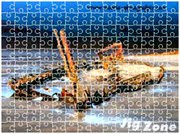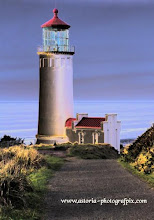 Anyone who has lived through a major earthquake can tell you how traumatic it is, but they probably can't tell you how long the fear stays with you. Probably because it never really leaves.
Anyone who has lived through a major earthquake can tell you how traumatic it is, but they probably can't tell you how long the fear stays with you. Probably because it never really leaves.I went through the magnitude 6.7 Northridge Earthquake Jan. 17, 1994, and lived only 8.5 miles from the epicenter. What a lot of people don't know is that earthquakes are incredibly loud. The noise of what sounded like a gigantic freight train approaching my bedroom at high speed on very bad tracks woke me up seconds before the quake actually hit, and made me sit up straight.
The second the quake slammed into the house, I was thrown flat while the house buckled and rolled and the walls shimmied all around me. It was beyond terrifying.
When the shaking finally stopped, two of my three dogs were on top of me, and my son was screaming in his room. My son calmed down, and the third dog was found in the kitchen happily snacking on the pot roast and other goodies that had been literally thrown out of the refrigerator onto the floor.
Like an idjit, I got into the car as soon as it was daylight and started driving around. The only word I can think of to describe the landscape is "eerie." Everything was unearthly quiet, especially for such a huge city. Stray dogs and cats were running about madly, fences were down, none of the traffic lights worked and naturally, there was a lot of rubble everywhere.
What was most disconcerting, though, were the aftershocks, which ranged in magnitudes 6 and below for days and days. Even so, things returned to "normal" rather quickly, but then, L.A. is used to earthquakes, and well prepared for them, and repairs started almost immediately.
Everyone was spooked, of course, and for years, every time I got stuck under a freeway overpass on a red light I would break into a sweat, terrified an earthquake might start and I'd be buried in tons of concrete. Post traumatic stress disorder, I guess.
Anyway, when I moved to Astoria, I thought, "At last, I'm out of an earthquake zone." Hah! I had never even heard of the Cascadia Subduction Zone, and was in for a very rude awakening. The Cascadia is capable of a rupture that can produce a magnitude 9 earthquake and a 100-feet high tidal wave, which makes the Northridge Quake's shaking seem like the effect of a big truck driving by in comparison.
The last time the Cascadia did its dance was Jan. 26, 1700, which we know from records kept by the Japanese of the resulting earthquake and tidal wave there, and from Pacific Northwest Indian legends. But Japan is a long way from the fault zone ... Astoria is less than 100 miles from it.
I kept wondering why I couldn't find anything about what happened to Astoria during that 1700 quake. What happened then could tell us more about what might happen here the next time the Cascadia Subduction Zone blows. There was nothing written, which isn't surprising, but the land itself should speak of its history.
Finally, in frustration, I wrote to Robert Witter, Regional Coast Geologist in the Oregon Department of Geology & Mineral Industries in Newport and asked. His prompt and thorough reply was:
"We don't know exactly what happened in Astoria as a result of the 1700 earthquake and tsunami because there is no written record of the event here in North America. From geologic evidence, native American legends, and geophysical modeling we can make some educated guesses. Damage to the area probably resulted from the following:
(1) Strong shaking during the earthquake;
(2) Liquefaction of soil causing extensive settlement and lateral spreading along river banks;
(3) Landslides triggered by earthquake shaking;
(4) Land subsidence (~1 m drop in elevation) caused by earthquake deformation;
(5) Tsunami.
"A tsunami probably reached Astoria based on computer models that simulate tsunami inundation in the Columbia River. Outcrops along the Lewis and Clark River, west of Astoria, expose thin sand layers that may have been deposited by tsunami currents in 1700.
"The easiest maps to get a hold of that show how far a tsunami might reach near Astoria were produced in 1995 to implement building code statutes that restrict development of new buildings in the tsunami inundation zone. The map for Astoria can be found on this page: http://tinyurl.com/astoria-tsu"
He also sent a link to earthquake hazard maps: http://tinyurl.com/astoria-quake (scroll down to IMS-10). Just above IMS-10, you can buy a tsunami hazard map for Astoria (IMS-11).
I found an interesting publication about how to survive a tsunami here: http://pubs.usgs.gov/circ/c1187/
Yikes. Very scary stuff. Buildings in L.A. are built with the earthquake factor taken into consideration. Not true in Astoria, from the looks of it. So I jumped from the frying pan into the fire earthquake-wise, but oh my, what a beautiful fire it is.
Click here to see Elleda's photography at the Astoria Photografpix web site






No comments:
Post a Comment